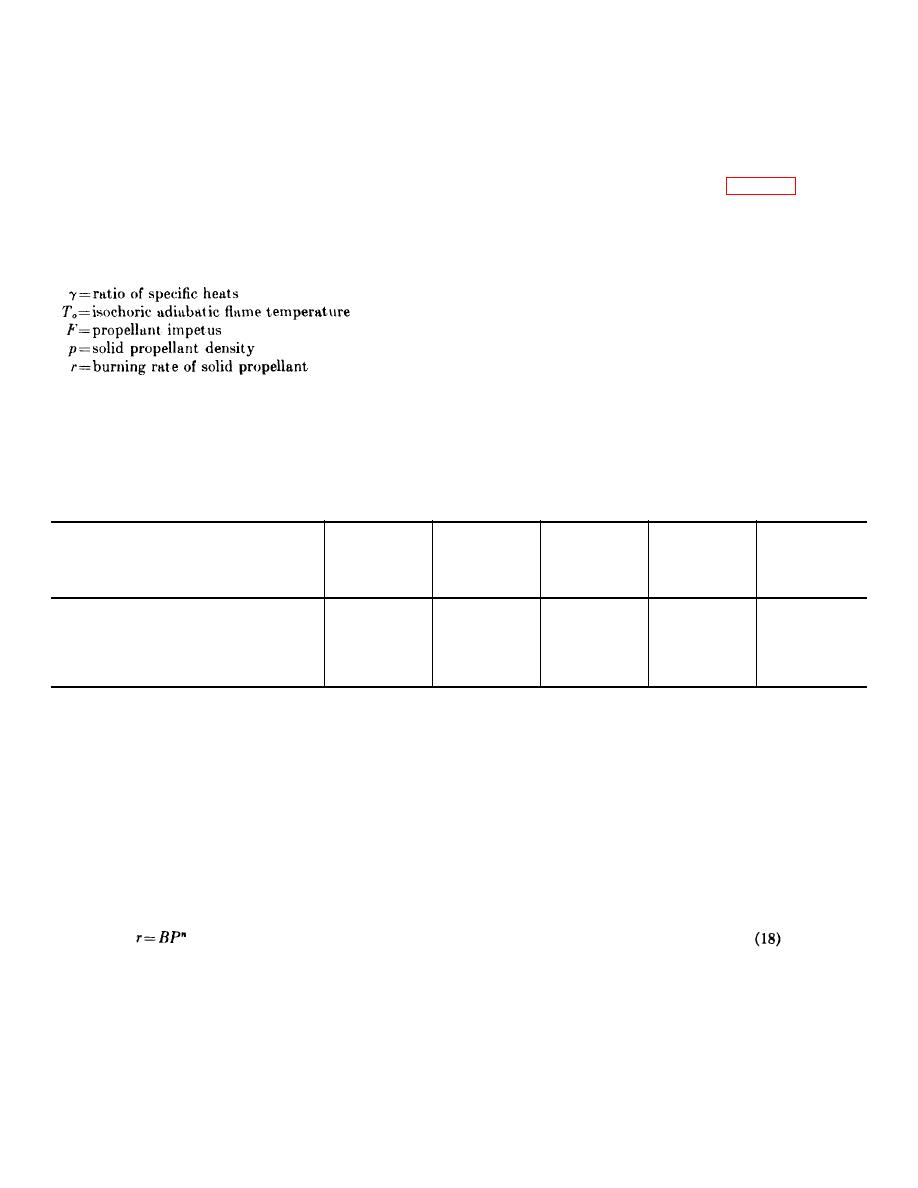
The use of these basic equations and equations derived from them in the design and analysis of propellant actuated
devices is discussed in this section.
b. Because it has been impossible to define the energy losses in propellant actuated devices theoretically, their
design and development have been empirical in nature. Since most devices have been developed to meet a specific
requirement and no two are exactly alike, each new device must be designed and developed with heavy reliance on past
experience. The basic aim of this chapter is to (1) refine the first order approximations of Section II, chapter 4, and show
how they were derived, (2) provide some basic ideas which will allow development of the propellant charge design to
meet any set. requirements, and (3) provide some "rules of thumb" or experience factors to aid in some areas where
problems are commonly encountered.
50. Propellant Parameters. a. The propellant parameters necessary for a ballistic analysis of propellant actuated
devices are as follows:
b. The ratio of specific heats, γ, of propellant gases varies from about 1.23 to 1.26 for most propellants used in
propellant actuated devices. The isochoric flame temperatures of common propellants used in propellant actuated
devices range from 2,000 K to 3,300 K. The values of propellant impetus, which is a measure of the available
propellant energy, are on the order of 3X105 to 4X 105 ft-lb/lb. The densities of common double-base propellants range
from 0.055 to 0.062 lb/in.3. Propellant parameters can be computed from the propellant's chemical composition. The
important parameters are given in table XIII for several typical propellants used in propellant actuated devices.
Table XII. Thermochemical Properties of Some Propellant Used in Propellant Actuated Devices
Flame temp,
Burning rate
Type
TO
Impetus, F
Ratio of
Density, p
coefficient,
O
3
3
4
( K)
(10 ft-lb/lb) specific beats
(lb/in. )
C' † (10- in./
sec/psi)
M2 .......................................................
3319
360
1.224
0.060
4.5
M5 .......................................................
3245
353
1.226
0.060
M6 .......................................................
2570
317
1.254
0.057
2.3
M10......................................................
3000
339
1.234
0 060
3.3
T8, H8 .................................................
2306
310
1.262
0.057
1.8
n.
† These are( approximate values which satisfy the equivalence. C'P-BP
c. The linear rate of burning of a solid propellant depends oil the rate at which the surface receives heat from the
surrounding combustion products. All exposed surfaces should receive heat at the same rate and, therefore, should burn
at the same rate. This conclusion is known as Piobert's Law and was first stated for black powder. It has been verified
for solid propellants in rocket, gun, and propellant actuated device applications by examination and measurement of
partially burned grains.
d. The rate of regression of a burning propellant surface, measured normal to the surface, is known as the linear
burning rate, r. It is expressed usually in terms of inches per second. Several factors affect the burning rate, including
the pressure at which the burning takes place, initial temperature of the propellant, gas velocity over the burning surface,
and composition of the propellant.
e. Of the several relationships that have been developed to describe the burning rate vs pressure dependency of
propellants, the following relationship applies, in general, to most propellants:
48


